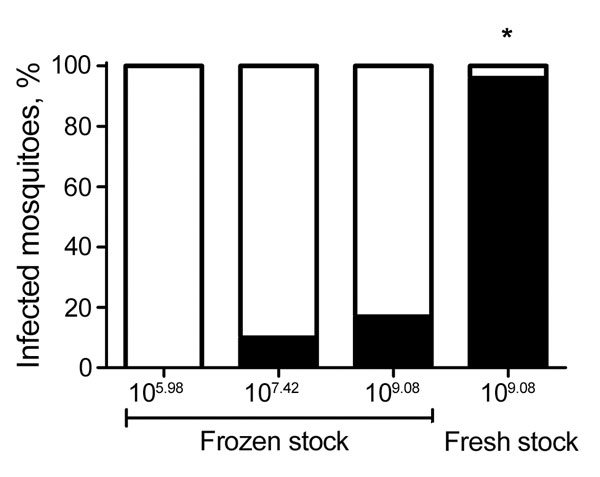Volume 23, Number 7—July 2017
Research
Effects of Zika Virus Strain and Aedes Mosquito Species on Vector Competence
Figure 2

Figure 2. Relationship between dose, infectivity, and preparation of Zika virus for Aedes aegypti mosquitoes. Quantitative reverse transcription PCR was used to test 12–25 processed Ae. aegypti mosquitoes for Zika virus 14 days after exposure to infectious blood meals containing various doses of Zika virus PR. Frozen stocks had been stored at −80°C and thawed before blood meal preparation, and fresh stocks were used directly after propagation without freezing. The difference in proportion infected when fresh and frozen stock at equivalent titers were compared was highly significant. *p<0.0001 by Fisher exact test.
Page created: June 19, 2017
Page updated: June 19, 2017
Page reviewed: June 19, 2017
The conclusions, findings, and opinions expressed by authors contributing to this journal do not necessarily reflect the official position of the U.S. Department of Health and Human Services, the Public Health Service, the Centers for Disease Control and Prevention, or the authors' affiliated institutions. Use of trade names is for identification only and does not imply endorsement by any of the groups named above.